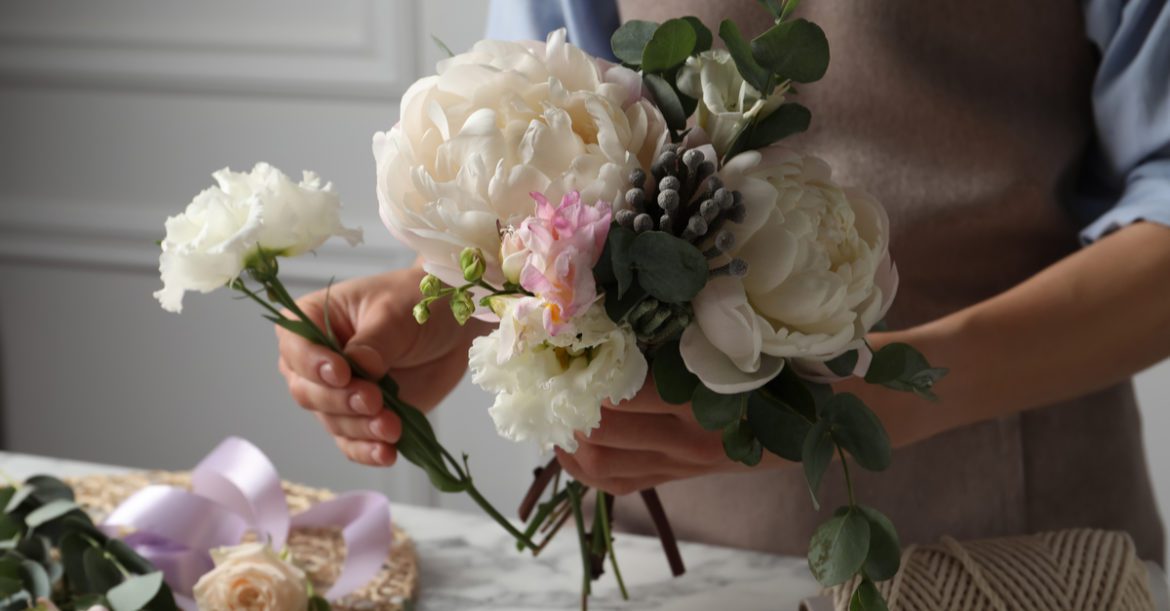Having fresh-cut flowers in our spaces can be both relaxing and invigorating — a way to bring the outdoors in for greater beauty in our everyday. Thinking that our flowers must be arranged in a certain perfect way, though, can be nerve-wracking! Build your confidence by lengthening the life of an already existing arrangement, from the market or from a florist. And if it’s been gifted to you, that’s all the more reason to keep the joy going for even longer.
To zhuzh up an arrangement, first empty your container, removing all flowers and greenery. If you’ll be reusing the same one, rinse your container and clean it to make sure that all residue, if there is any, is off the sides and bottom. You may want to consider a smaller container (or several smaller ones, even) since you’ll possibly be discarding some dead or drooping stems.
To extend the life of any cut flowers or greenery, you want the water clear and the stems still able to absorb water from their cut edges at the bottom. So, with a clean pair of scissors (a quick wipe with rubbing alcohol does the trick) and your clean container at hand, discard any whole stems that are obviously tired and past their prime. For the stems you’re keeping, take a look at the lower parts especially: some flowers or pieces of greenery may be worth saving if you remove blossoms or parts that need pruning or pinching off. The very bottoms of all stems may be brown (looking a little less fresh or alive than the upper parts) and need trimming, and any leaves that will be below the water line definitely need removing.
With the lower ends taken care of, take a look at the leaves and blooms themselves, removing any of them that are spent: wrinkled leaves on alstroemeria, browning outer petals on a rose, or spent lower blossoms an iris, for example.
After you’ve cleaned up your flowers and greenery, consider how you’ll want to put them all back together. Do a quick scan and perhaps group like varieties together. As a general rule, you’ll start by putting the tallest, thicker-stemmed flowers into your container first, as we usually associate these with the centerpiece of the arrangement. Holding Flower No.1 more or less upright with one hand, trim the ends of Flower No.2 and place the next-thickest stemmed flowers around those in the center of the container. You’ll turn your vase to evenly space these around your first variety, more or less, cutting stems of this second variety to let the centered flowers poke up above these.
Continue placing each variety in with one hand while propping up flowers with the other as needed, turning the container as you go. Greenery generally goes in last, filling in holes. If there are so many holes that the flowers don’t really fill the container, remember that downsizing to something smaller makes perfect sense when you’ve just pared down, cleaning out flowers that have faded.
Variations on this theme:
— If you have far more of your tallest flowers or greenery remaining than anything else, let those act as outer supports (perhaps at a much shorter height than usual) for a smaller number of more delicate flowers in the center of the arrangement.
— Group all similar flowers together, each in their own containers that you arrange together as a focal point.
— If your arrangement will be against a wall, say, having a definite front and sides, then trim and place your flowers for best viewing from the front angle, instead of with symmetry in mind.

